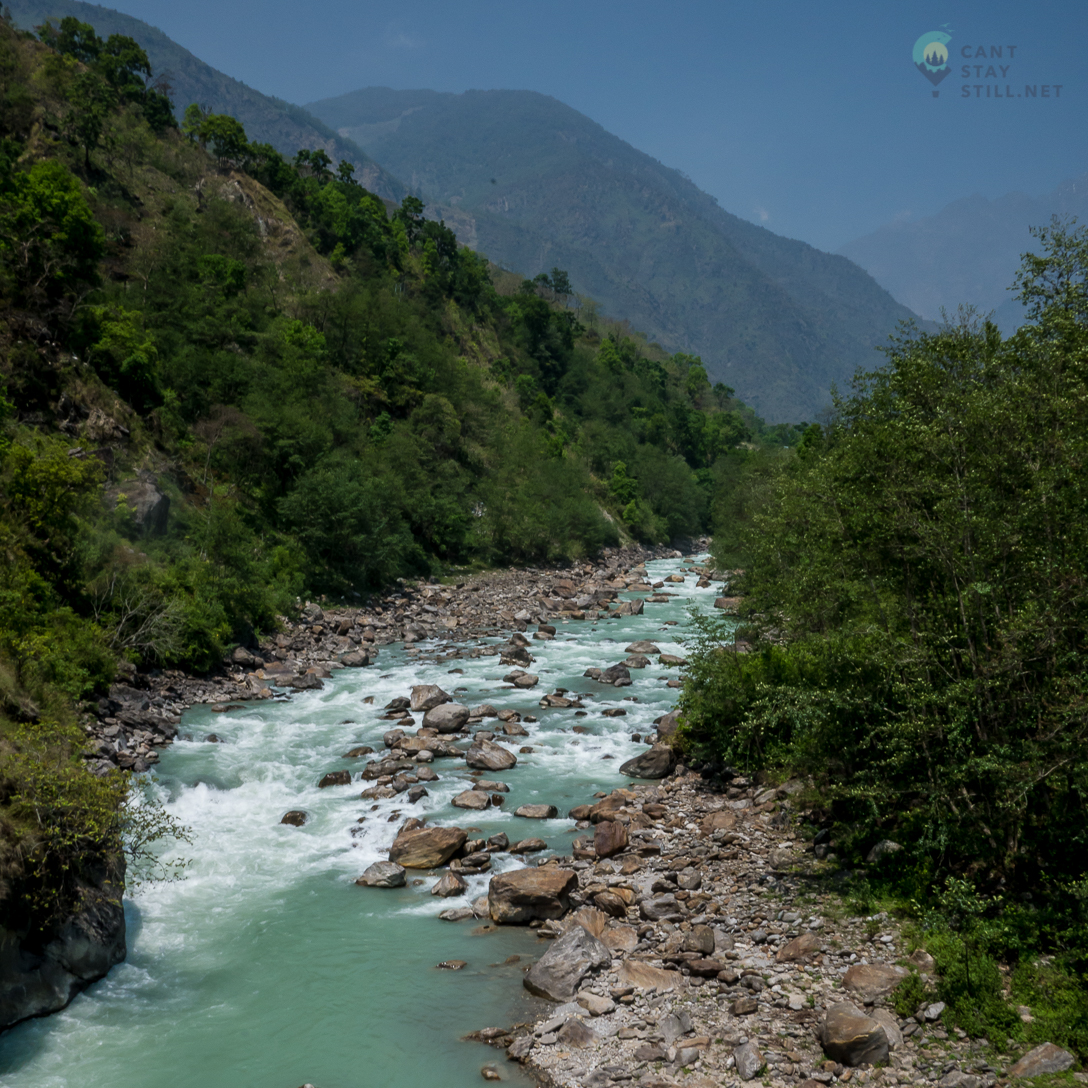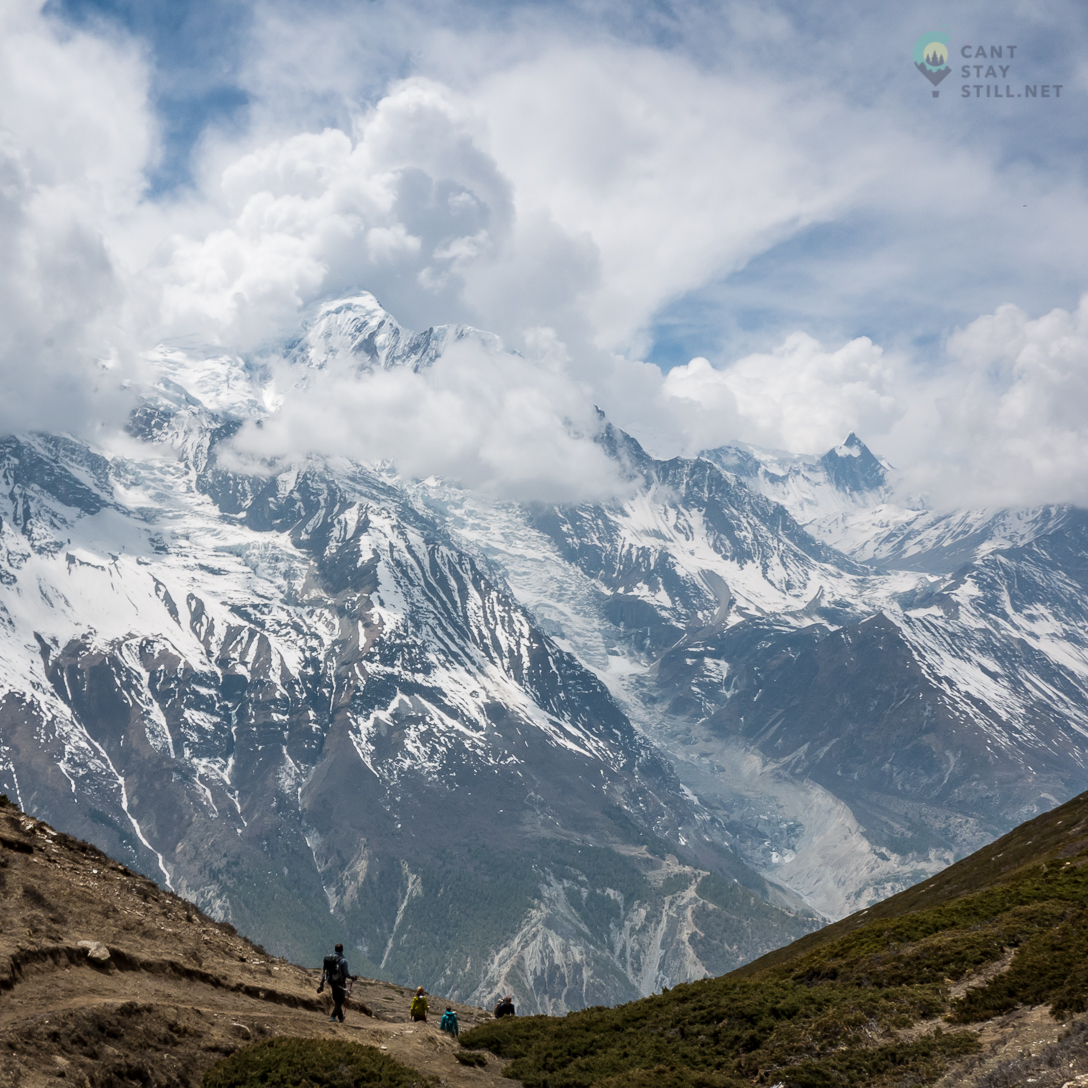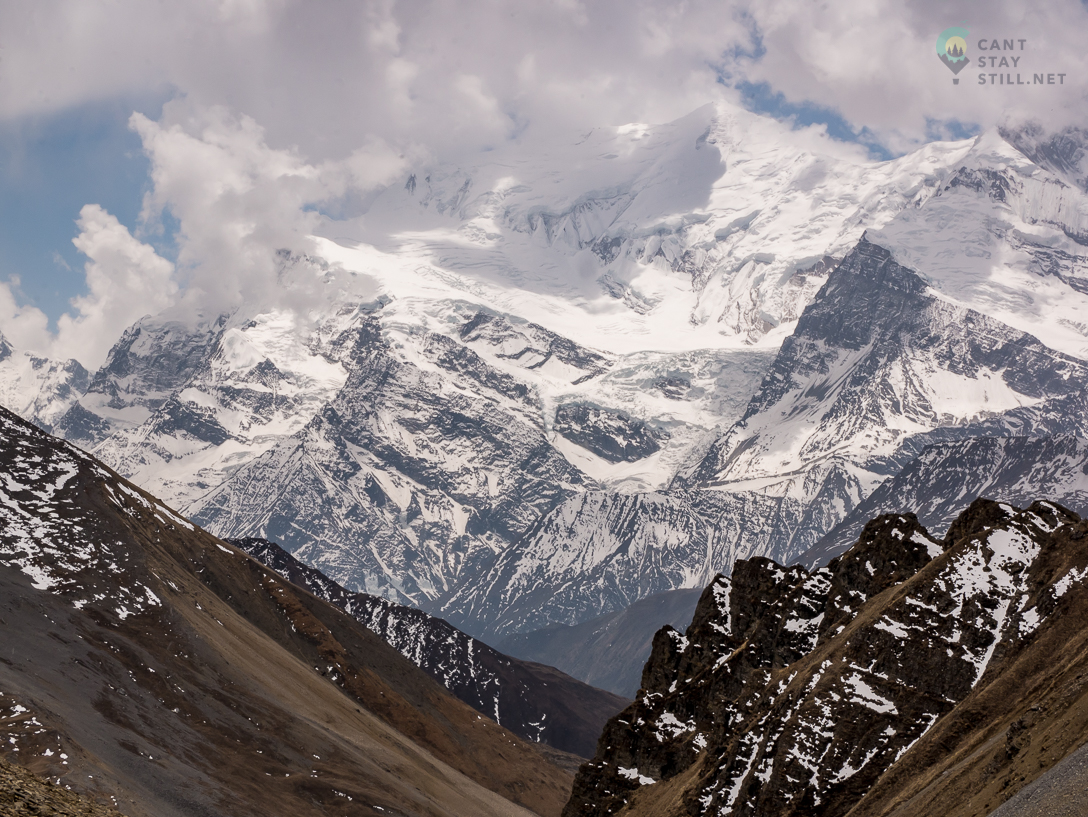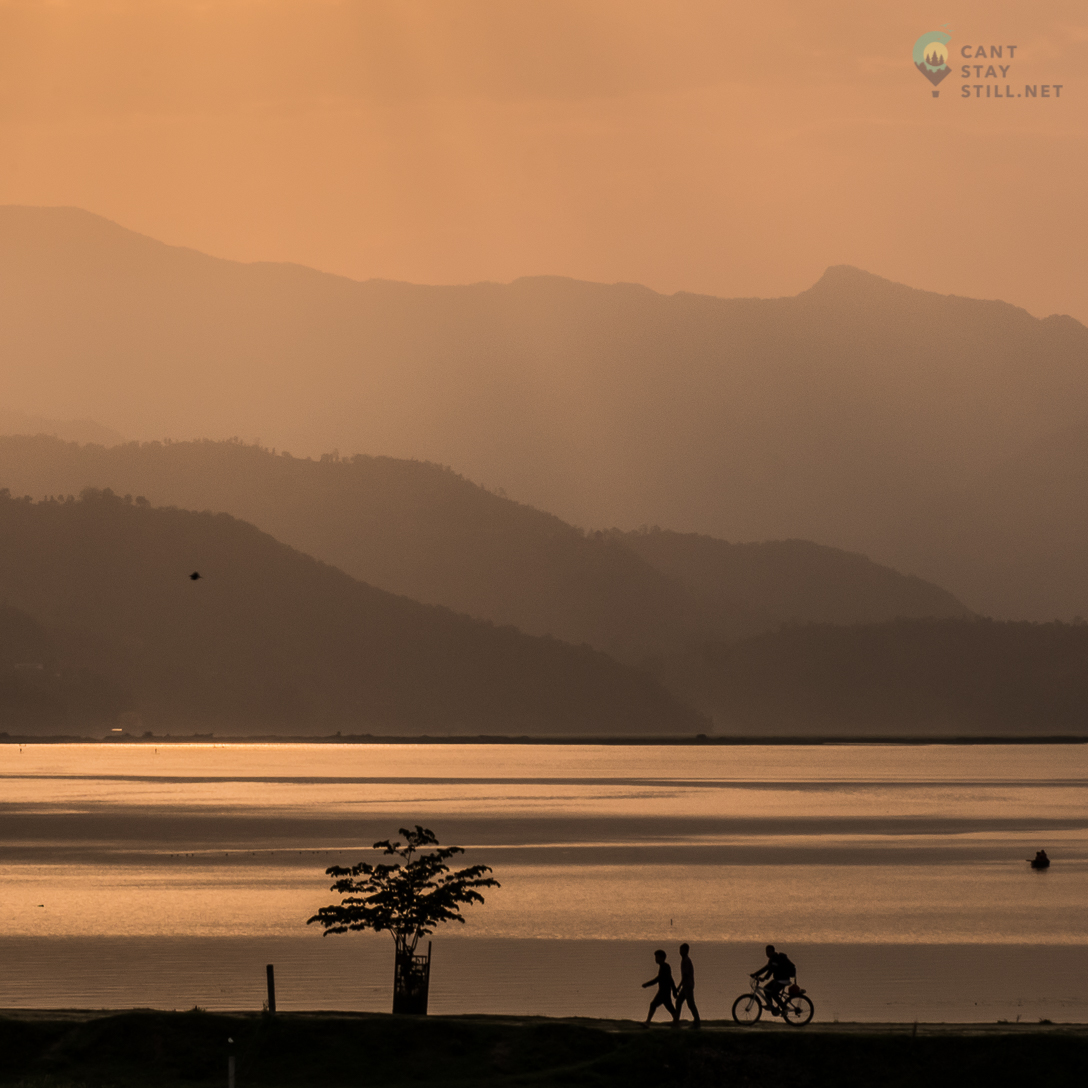…instead of 12
I’ll start by pointing out the obvious: the places you go through along the Annapurna circuit are all breathtaking, each in its own way, and the more time you spend on the tracks, the more nature will fill your soul with joy. So this post is not for those who have ample time at their disposal. To those, I say: “go slow, take your time to enjoy each step you take and each view the trek lays before your eyes”.
But if you have shorter holidays, or can only spend so many days doing this trek, then limited time should not stop you.
Most itineraries available online suggest at least 12 days from Kathmandu to Pokhara but, with a bit of determination, you can do it in 9, while still enjoying the stunning scenery and, most importantly, not skimping on safety.
While no technical skill is required for this trek (no climbing or even scrambling), stamina and good shoes are mandatory as it involves up to 12h of walking a day.
I started in Kathmandu because I landed at Tribhuvan International Airport and I wanted to start straight away. But everything I cover in this post applies to departures from Pokhara too.
Day 0 – Planning
As you can imagine, before the actual start, some preparation is mandatory to make sure you have everything you need to make the trip fun and safe. For me, that meant:
- a porter-guide
- shopping and equipment rental. If you don’t have all the equipment you need, there are plenty of shops that sell everything you need. There are also several places renting the equipment.
- paperwork: you are required by law to get the ACAP (Annapurna Conservation Area Project) access permit and get registered with TIMS (Trekkers’ Information Management System).
This all happened the afternoon of my arrival and the following morning.
Day 1: Kathmandu – Besisahar
(6h by bus)
It was only around noon that I had my permits and, at 1 pm, the local bus was making its way through traffic towards Besisahar. It took about six hours (including two pee breaks) to reach the destination. If departure is from Pokhara, this day would be spent on the bus Pokhara to Besisahar.
If you manage to leave early in the morning, you can start walking on this afternoon to get some distance under your belt and make your own variations to this route. Before Manang, villages are roughly 1-2 hours distance away, so it’s easy to find a place to stay when you decide to stop. If you do make variations to this route, try to do so that you shorten day 4 (Chame to Manang).
Day 2: Besisahar (820m) – Chyamche (1385m)
29km walk
Most itineraries will suggest 2 days for this but it’s actually just a really easy walk. No crazy uphills, just a loooong walk in a park. You’ll be following the river, crossing lots of pedestrian bridges, passing through colorful villages and terraced farming lands.

Day 3: Chyamche (1385m) – Chame (2710m)
27km walk
Again, most people split this into two days but there is no technical difficulty or impediment to covering this distance in one day. The scenery starts being more diverse, with the first view of Annapurna II and you’ll have some patches of forest on the way. If you like goats, you’re in luck cause they are everywhere 🙂
Day 4: Chame (2710m) – Manang (3540m)
34km walk
This was probably the hardest of the long days. I chose the tougher option: the route that goes through Upper Pisang (3310m) and Ghyaru (3730m) but it was totally worth it because the views are some of the best on the route.
A shorter, easier and considerably less scenic route is available through Lower Pisang and skipping Ghyaru.
This is where the long walking days are over. It is highly recommended to stick to the rule of 500m altitude difference from one night to the next after this point. It will save you health issues which you really don’t want when you are out in the mountains and with limited time to complete the route.
Day 5: Manang (3540m) – Ice Lake (4600m) – Manang (3540m)
You will find this called as a ‘rest day’. Do NOT be fooled. The climb to the Ice Lake and the word ‘rest’ don’t have a place in the same sentence. This day you’re going from 3500m up to 4800m and if 1300m vertical ascent is your kind of party, keep in mind that it’s a steady 3h (at least!) of ascent with your lungs having a tough time keeping up due to the lack of oxygen.
It might seem like a good idea to skip Ice Lake and just chill in Manang. If you are short on time, and you want to minimize your chances of getting altitude sickness, it’s actually a pretty bad idea. You want to help your body get used to the altitude and the climb to Ice Lake will do that. Also, the views on the way are pretty impressive.

Day 6: Manang (3540m) – Yak Kharkha (4050m)
9km walk
This is a short and sweet day that is more restful than the “rest day” in Manang. The walk is easy, the ascent is distributed so you wouldn’t even feel it at a lower altitude.
Day 7: Yak Kharkha (4050m) – Phedi (4450m)
6km walk
Another short day, and a hike that leaves you slightly breathless: altitude starts to kick in and it’s hard to ignore the lack of oxygen at this point.
After arriving in Phedi and checking in at the resort (amazing views, pizza, and fresh bakery make it qualify for the title) I went up to the High Camp (4850m). It’s only 2km walk, but it’s pretty steep and it takes one hour to complete it. Because of the breathlessness, I had to stop for an extra lungful of air every 10-20 steps. But it’s a good idea to do the hike for three reasons:
- acclimatization: going up another 500m and then back down will help your body adjust.
- the views: when you will be crossing the pass the next day, it will be still dark when you get here so this is your chance to actually enjoy the scenery. And it is worth it!
- knowing what to expect: as I said, it will be dark the following day when you’re doing the same route. It will be easier if you already know what’s in front of you.

Day 8: Phedi (4450m) – Thorong La Pass (5416m) – Muktinath (3800m) – Jomsom (bus from Muktinath)
16km walk
I won’t lie to you. This is the hardest day of the trek. It’s long hours walking in thin air. But you’ve walked for long hours before and you already know how it feels to be hiking at altitude. Now you will be combining the two and you will feel like Superman/ Wonder-Woman once you’re done with it.
The walk starts at 4 am (ish). This seems like crazy but it’s done so that you get to the peak before the bad weather (read: crazy winds) sets in. Plus you won’t be able to sleep too much anyway.
You’re already familiar with the 2km uphill to High Camp. After that, it’s another 4km till the Pass. They seem like 14, but you can do it. There is a teahouse at Thorong La and I will only say this: ginger tea. Then 10km downhill without tea houses for 6km after the pass. Keep this and the high altitude in mind when planning your water and efforts.
Day 9: Jomsom – Pokhara
14h bus
I was told it would take 7h to get to Pokhara and that it was a direct bus. I’m not sure what a direct bus is supposed to look like, but it stopped everywhere and picked up anybody that flagged us down. It was overcrowded, which means that it took longer to pass the police controls, as it involved stopping for extra passengers to get off, passing the control and then picking back up the passengers that reached us walking. We also encountered two or three land slides that made the road impracticable. Each of these landslides meant at least one hour wait for the other vehicles to make a path that the bus could use.
So this was probably the most (actually, the only) dangerous and scary day of the route, but hey! adventure comes in many forms and chilling in Pokhara after all this was all the more rewarding.

